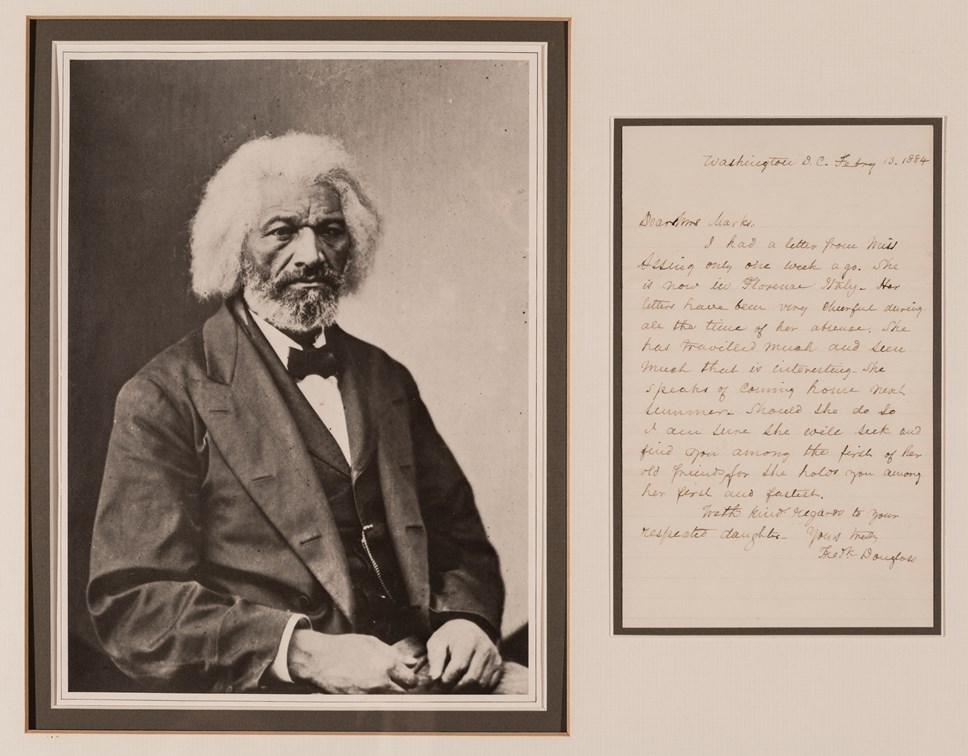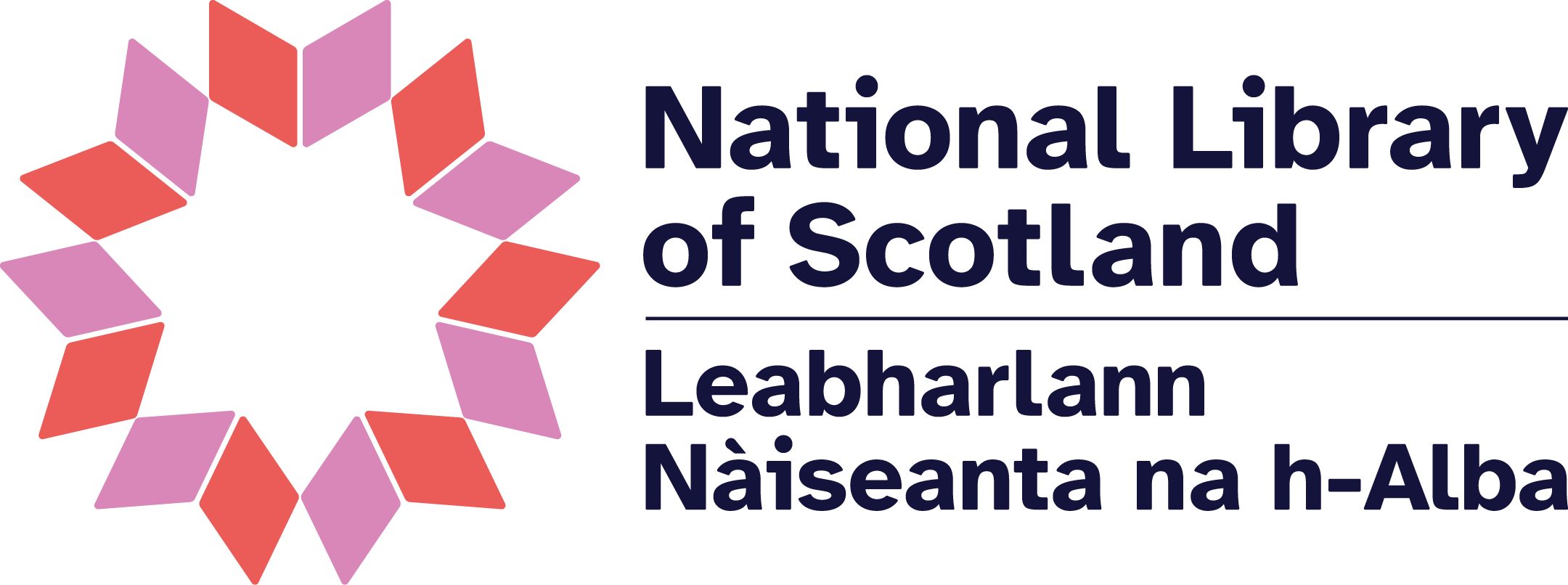
Frederick Douglass display at the National Library
In a world-first, items from the Frederick Douglass family collection will be on public display at the National Library of Scotland from Thursday (4 October).
The letters, speeches and photographs from the Walter O. and Linda Evans Collection, which until now have never been seen by the public, are on loan to the National Library for a display to mark the 200th anniversary of antislavery campaigner Frederick Douglass’s birth.
Walter O. Evans is a collector and conservator of African American art, history and culture. He personally delivered the material to the Library in August, and returns to Edinburgh later this week for the launch of Strike for Freedom: Slavery, Civil War and the Frederick Douglass Family.
Dr Evans said:
“I am pleased that the letters, papers and photographs from my Douglass collection are being exhibited at the National Library of Scotland. Douglass loved Scotland and I can think of no better place or time to exhibit this material than in Edinburgh on the 200-year anniversary of his birth.”
The University of Edinburgh’s Professor of Black Studies and Personal Chair in English Literature, Celeste-Marie Bernier, is guest Curator. She said:
“For the first time, Strike for Freedom tells the story of the revolutionary activism not only of Frederick Douglass – world-famous freedom-fighter, liberator and human rights campaigner – but of his family members. Douglass’s wife, Anna Murray, daughters, Rosetta and Annie, and sons, Lewis Henry, Frederick Jr., and Charles Remond all sacrificed everything they had in working towards a ‘new dawn of freedom’.”
National Librarian Dr John Scally said:
“We are very pleased to host this world-first display of material related to Frederick Douglass, alongside material from our collections. The exhibition sheds new light on Douglass’s time here in Scotland in the mid-19th century, as well as providing insight into the work of the wider Douglass family as they campaigned for social justice in the US.”
Frederick Douglass started life as Frederick Augustus Washington Bailey when he was born into chattel slavery in Maryland in 1818. In freedom, his new surname was inspired by Sir James Douglas from Sir Walter Scott’s The Lady of the Lake.
While the many public lives of Frederick Douglass as the representative ‘fugitive slave’, author, orator, philosopher, abolitionist and reformer continue to be told worldwide, this display tells the story of Douglass as a private individual and family man. It features manuscripts, letters, speeches and photographs of Frederick Douglass and his sons, Lewis Henry, Frederick Jr., and Charles Remond.
The display also shows that Frederick Douglass was not alone in his journey to Scotland, and his work with Scottish antislavery societies. He was joined by a number of African American freedom-fighters who travelled to Scotland in their campaigns to abolish slavery, segregation, and lynchlaw, including Ida B. Wells-Barnett, Amanda Smith, Josiah Henson, Moses Roper, and Ellen and William Craft.
Strike for Freedom: Slavery, Civil War and the Frederick Douglass Family runs from Thursday 4 October 2018 until Saturday 16 February 2019 at the National Library of Scotland, George IV Bridge, Edinburgh. Entry is free.
Contact Information
Notes to editors
The National Library of Scotland
The National Library of Scotland is a major European research library and one of the world’s leading centres for the study of Scotland and the Scots – an information treasure trove for Scotland’s knowledge, history and culture.
The Library’s collections are of world-class importance. Key areas include digital material, rare books, manuscripts, maps, music, moving images, official publications, business information, science and technology, and modern and foreign collections.
The Library holds more than 26 million physical items dating back over 1,000 years in addition to a growing library of e-books, e-journals and other digital material. The collection includes more than four million books, eight million manuscripts, two million maps and more than 45,000 films and videos. Every week the Library collects around 3,000 new items. Most of these are received free of charge in terms of Legal Deposit legislation.
